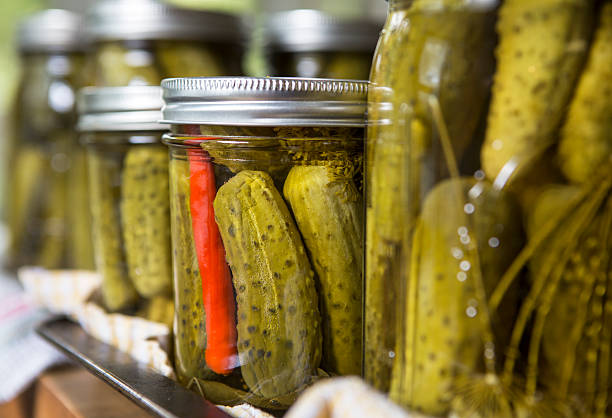History
The practice of pickling dates back to ancient Mesopotamia around 2400 BCE, where it was used to preserve food. By 2030 BCE, cucumbers native to India were being pickled in the Tigris Valley. The Juicy 4,000-Year History of Pickles
In ancient Egypt, Queen Cleopatra credited pickles with contributing to her health and beauty. Similarly, Julius Caesar provided pickles to his troops, believing they would enhance their strength. The Juicy 4,000-Year History of Pickles
During the Age of Exploration, pickles were essential for sailors to prevent scurvy. Christopher Columbus rationed pickles to his crew and even cultivated cucumbers in Haiti to replenish supplies. The Juicy 4,000-Year History of Pickles
In the 17th century, Dutch farmers in New York began growing cucumbers, leading to a burgeoning pickle industry. Eastern European Jewish immigrants in the late 19th and early 20th centuries introduced kosher dill pickles to America, solidifying New York City's status as a pickle hub. History in a Jar: The Story of Pickles
Pickling Methods
Pickling involves preserving food by anaerobic fermentation in brine or immersion in vinegar. The two primary methods are:
- –
Lacto-Fermentation: Utilizes beneficial bacteria to convert sugars into lactic acid, creating an acidic environment that preserves the food and develops complex flavors.
Pickling
- –
Vinegar Pickling: Involves immersing food in vinegar, which acts as a preservative due to its acidity. This method is quicker and imparts a sharp, tangy flavor.
Pickling
Global Varieties
Asia
- –
China: Chinese pickles, or 'pao cai,' encompass a wide range of vegetables fermented in brine or marinated in soy sauce. Common ingredients include Chinese cabbage, radish, and mustard greens.
Chinese pickles
- –
Japan: 'Tsukemono' refers to Japanese pickles made from various vegetables like daikon radish, cucumbers, and eggplant, preserved using methods such as salting, brining, or fermenting with rice bran.
Pickling
- –
Korea: 'Kimchi' is a staple Korean side dish made from fermented napa cabbage and radish, seasoned with chili pepper, garlic, ginger, and fish sauce.
Pickling
Middle East
In countries like Iran and Turkey, 'torshi' or 'turşu' are pickled mixtures of vegetables such as cucumbers, turnips, and carrots, often flavored with garlic and spices. Pickling
Europe
- –
Eastern Europe: Sauerkraut, fermented cabbage, is a traditional dish in countries like Germany and Poland.
Pickling
- –
France: 'Cornichons' are small, tart cucumbers pickled in vinegar and herbs, commonly served with pâtés and cheeses.
Pickling
Americas
- –
United States: Dill pickles, particularly kosher dills introduced by Jewish immigrants, are a popular accompaniment to sandwiches and burgers.
History in a Jar: The Story of Pickles
- –
Mexico: 'Escabeche' refers to pickled jalapeños and other vegetables, often served as a condiment.
Pickling
Nutritional Value
Pickles are low in calories and can be a source of vitamins and minerals, depending on the ingredients used. Fermented pickles, like kimchi and sauerkraut, contain probiotics beneficial for gut health. However, pickles can be high in sodium, which may be a concern for individuals monitoring their salt intake. Pickled cucumber
Cultural Significance
Pickles hold cultural significance in many societies. In India, 'achar' is an integral part of meals, adding flavor and aiding digestion. In Korea, kimchi is not only a dietary staple but also a symbol of national identity. Pickling
Modern Industry
The global pickle industry continues to thrive, with countries like India being major exporters. In 2022, India ranked third globally in pickle exports, with a total export value of $232 million. Indian Pickles Around the World & Their Super Popularity
Conclusion
Pickles have a rich history and diverse presence in global cuisines. Their methods of preparation and cultural significance vary widely, reflecting the adaptability and enduring appeal of this preservation technique.
